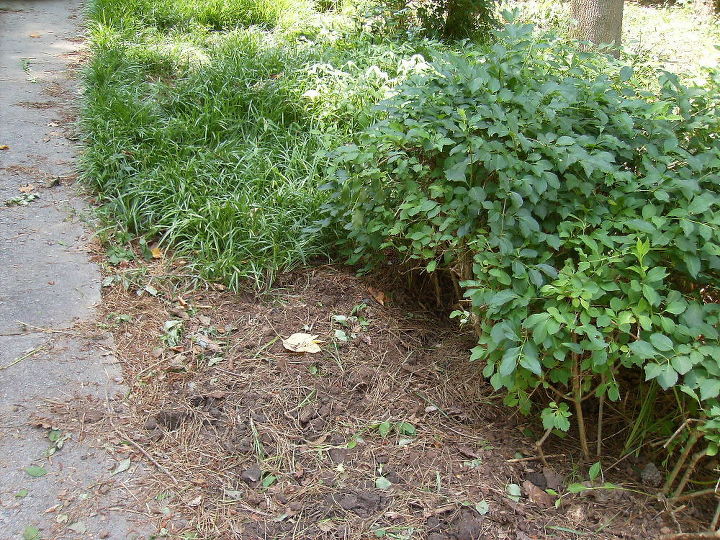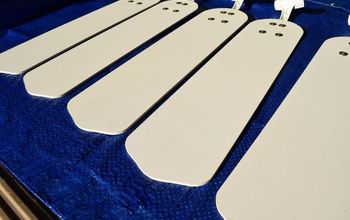What is the easiest way to get rid of goatheads?

Related Discussions
GNATS - How to get rid of them?
Somehow my house and garden got tiny gnats that killed my fuchsia plant and fly everywhere. I have tried ALL the Web recommendations - soap and oil dishes, sand in th... See more
Marigolds growing! Should I pinch the buds?
My marigold plants are growing. I heard that pinching the buds until Autumn will allow them to grow without killing the plant. Is this true?
Growing garlic
Growing our first garlic, should we wait until the leaves are drying out before we pick it? Husband picked first one today along with our first potatoes.
How to keep mice out of your garden?
Hi everyone, I have mice in my garden destroying my vegetables and I have also noticed them in the barn and shed. Please can someone tell me how to prevent them from ... See more
What's the best flower/plant to grow in Texas?
I know that opinions vary, but what's your opinion?!I have great luck w Rosemary plants. Green all year long.
What's an effective way to get rid of liriope? My entire front yard
used to be liriope, but dug it all up maybe 5 yrs ago. Planted shade grass which lasted 2 seasons. Then plowed up the yard again and now it's tree mulch with azaleas,... See more
What is the best way to get rid of Wisteria?
I have been overrun by Wisteria vines...have some rather large ones that end up sending runners all over my yard and then it pops up everywhere. I have tried cutting... See more




http://homeguides.sfgate.com/rid-goathead-weeds-82576.html
MANAGEMENT
Long-term control of goathead/puncturevine can be achieved by reducing the amount of seeds in the soil. This is best accomplished by removing plants before they produce seeds (i.e., before or at flowering) and continuing to do so over several years.
Burrs that have dropped after removing the plant may be collected and removed by sweeping or raking the ground. Even patting the ground with a piece of carpet will help collect the burrs.
Biological control from two introduced weevils is also very effective, but there may be resurgences every few years as the number of the weevils decline along with the population of the puncturevine.
The primary method of management for puncturevine in the home landscape and garden is removal of seedlings and older plants by hand or hoeing, taking care to also remove any burrs that fall off the plant. Avoid bringing puncturevine into uninfested areas on shoes and the wheels of mowers or carts.
Cultural and Mechanical Control
In most situations, puncturevine is best controlled by hand removal or by hoeing to cut the plant off at its taproot. Monitoring the area and removing the weed throughout the late spring and into the summer will greatly reduce the impact of the weed the next year. Shallow tilling (about 1 inch deep) of seedlings or small plants can be effective in larger areas. Deeper tilling is not recommended since this may bury seeds and they may be able to germinate for several years afterwards. Hand removal, hoeing, or cultivation should be initiated prior to flowering and seed production. Mowing is not an effective method of control since the plant grows low to the ground.
Mulches can be used to control common puncturevine in ornamental plantings, orchards, vineyards, vegetable crops, and gardens, if they screen out all light. To be effective, organic mulches should be at least 3 inches thick. However, puncturevine burrs that fall onto mulch surfaces can establish on the mulch surface due to the puncturevine’s deep taproot. Synthetic mulches, which screen out light and provide a physical barrier to seedling development, also work well.
Aeration of compacted sites and planting competitive desirable plants can also reduce the impact of puncturevine by making the area more favorable for the growth of the desired plants and reducing resources available to the weed.
Biological Control
Two weevils, Microlarinus lareynii and M. lypriformis, native to India, France, and Italy, were introduced into the United States as biocontrol agents in 1961. Microlarinus lareynii is a seed weevil that deposits its eggs in the immature burr or flower bud and the larvae feed on and destroy the seeds before they pupate and emerge as adults, disperse, and start the cycle over again. Generation time is 19 to 24 days in the summer in southern California. Microlarinus lypriformis is a stem weevil that has a similar life cycle except that it lays its eggs in the undersides of stems, branches, and the root crown. The larvae tunnel in the pith where they feed and pupate. The adults emerge from holes chewed in the upper surfaces of the stems, branches, and crowns. Adults of both species overwinter in plant debris. Although the stem weevil is slightly more effective than the seed weevil when each is used alone, the weevils are most effective if used together and the puncturevine is moisture-stressed.
Both species of weevils are available for purchase from biological control suppliers but purchase and release is not generally recommended because weevils collected from other areas may not survive at your location. In most California counties where releases would be beneficial, county agricultural commissioners have release programs or can direct you to collection sites where you may be able to collect them yourself. Contact your county agricultural commissioner's office for more information.
Chemical Control
Chemical control is generally not necessary for the control of puncturevine in the home landscape. However, in large areas, or places where there was a heavy infestation in previous years so that it’s difficult to remove by hand, hoeing, or tilling, herbicides may be used to control puncturevine.
There are few preemergent herbicides that are effective. Products containing oryzalin, benefin, or trifluralin will provide partial control of germinating seeds. These must be applied prior to germination (late winter to midspring).
After plants have emerged from the soil (postemergent), products containing 2,4-D, glyphosate, and dicamba are effective on puncturevine. The smaller or younger the plant, the better the postemergent herbicides work. Dicamba and 2,4-D will injure most broadleaf plants so it is important that they only be applied to the weeds and drift is minimized. They can be applied to lawns without injuring the desired grass. Glyphosate will kill or injure most plants so it should only be used as spot treatments or on solid stands of the weed.
Chop it up in small pieces and make some goat head soup .
what the heck is goatheads?
My thought is...WHY do you have goat heads in the first place????